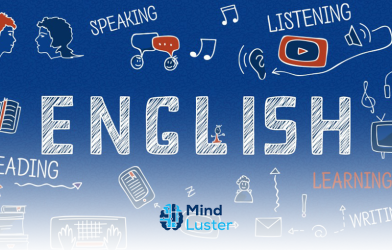Have you ever wondered how computer programs, mobile apps, and artificial intelligence are created? The answer lies in the world of programming. In this article, we will delve into the fascinating realm of programming, from its basic definition to the various types of languages. So, if you're ready to embark on a journey into the tech world, keep reading to discover the wonders of programming and how you can become a part of it.
What is Programming?
At its essence, programming is the art of crafting an executable program to achieve a specific task or solve a particular problem. This involves the creation of a series of instructions in a programming language that a computer can comprehend and execute. It's like teaching a language to a machine, and the machine follows your instructions to perform the desired task.
In the following sections, we will dive deeper into what is programming? We will know more about how computers communicate with human beings through a common language.
The Essence of Programming
Programming languages vary in syntax and functionality. They are designed to be readable by humans and executable by machines. On that high note, programming can be thought of as a form of communication between humans and machines. All the programming languages share the common goal of translating human intentions into machine-executable code.
But have you ever wondered about the birth and growth of these languages over the years? Let’s take a fascinating journey together through the evolution of programming from its humble beginnings to the sophisticated languages we use today. This will help us understand more about what programming is.
The Evolution of Programming
The history of programming started when Ada Lovelace designed the language for Charles Babbage’s early mechanical general-purpose computer, the Analytical Engine, in the early 19th century, when the first algorithm was created for a machine.
However, modern programming began in the mid-20th century with the advent of electronic computers. The first generation of programming languages, known as machine languages, consisted of binary code, which is a series of 0s and 1s that the computer’s hardware could directly execute.
Since the 0 and 1 languages were so complex for humans to write and debug, assembly languages were created. Assembly languages provide a more human-readable form of machine code, using prompt codes to represent machine-level instructions.
The evolution continued with high-level programming languages such as FORTRAN, COBOL, and Lisp in the 1950s and 1960s that abstracted much of the complexity of machine code, allowing programmers to write instructions in a more human-friendly syntax. This trend is what led to the development of higher-level languages such as Python, Java, and Javascript.
After familiarizing ourselves with the history of programming, let’s zoom in more on what programming is to see the types of programming languages and their uses.
Types of Programming Languages
Although programming languages can be categorized in several ways, the most common classification is based on their level of abstraction and their intended use cases. Programming languages can be divided into the following groups:
Low-Level Languages
Providing little or no abstraction from a computer’s instruction set architecture, Low-level languages are closer to machine code. They include:
- Machine Languages are considered the most basic programming languages, consisting of binary code that the CPU can directly execute.
- Assembly Languages use mnemonic codes to represent machine-level instructions, providing a slight abstraction over machine language.
So, that was the Low-Level language. Let’s make the comparison more comprehensive and learn more about the High-Level Languages.
High-Level Languages
Providing greater abstraction, high-level languages make it easier for humans to read and write. They are usually platform-independent so that they can run on different types of hardware with minimal modification. High-Level Languages include:
Procedural Languages
They are languages such as C and Pascal that are based on the concept of procedure calls. Those language structure programs are a sequence of instructions that manipulate data structure.
Object-Oriented Languages
They are languages like Java, C++, and Python, which organize code into objects that obtain both data and methods.
Functional Languages
Languages such as Haskell and Lisp are based on mathematical functions emphasizing the application of functions and often avoid changing-state and mutable data.
Scripting Languages
They are languages often used for writing short programs, automating tasks, and integrating systems. Examples of Scripting languages are JavaScript, Python, and Ruby.
If you think that you have understood what is programming, then you are mistaken; in the following section, we will go through some core concepts in programming to make the image more complete.
Core Concepts in Programming
To become more familiar with programming, it is crucial to grasp several key concepts of how programs are structured and executed.
Variables and Data Types
Used to store data that can be manipulated by the program, Each variable has a data type that designs the kind of data it can hold, such as integers, floating-point numbers, characters, and strings. Understanding how to declare and use variables is fundamental to understanding what is programming.
Control Structures
They control the flow of a program and include:
- Conditional Statements
- Loops
Functions and Procedures
Designed to perform specific tasks, functions help in breaking down a program into smaller, manageable parts, making code more modular and reusable.
Data Structures
They are ways of organizing and storing data so that it can be accessed and modified efficiently. Common data structures include arrays, linked lists, stacks, queues, trees, and hash tables. Mastering data structures is crucial for writing efficient programs.
Algorithms
They are step-by-step procedures or formulas for solving problems. They form the backbone of programming, dictating how data is processed and tasks are performed. Examples include sorting algorithms and search algorithms.
Read more in our Coding Made Easy: Top 5 Easiest Programming Languages to Master
The Programming Process
Several stages are involved, and the programming process goes from conceptualization to deployment. Here is a brief overview of the process:
1. Problem Definition
Understanding the requirements and constraints and clearly defining the problem you want to solve is the first step in the programming process.
2. Planning
Developing a plan or algorithm that outlines how to solve the problem involving flowcharts, pseudocode, or other planning tools.
3. Coding
Write the actual code in a programming language that implements the planned solution. This involves creating variables, control structures, functions, and data structures as needed.
4. Testing
It is the process of running the program with various inputs to ensure it works correctly and debugging any issues that arise, ensuring the program behaves as expected.
5. Deployment
Once the program is tested and debugged, you can deploy it. This process might involve compiling the code, setting up the environment, and distributing the executable.
6. Maintenance
To continuously update and maintain programs, fix bugs, add features, and improve performance.
Now, after answering the question of what is programming, you have to learn the different roles of programmers and choose your career path.
The Role of Programmers
As the individuals who write and maintain code, programmers need a deep understanding of programming languages, algorithms, and data structures. Additionally, they often work with various tools and frameworks to enhance productivity and manage complexity. Programmers can specialize in different areas, such as:
- Front-end development focuses on the user interface and user experience, using languages like HTML, CSS, and JavaScript.
- Back-end development involving server-side logic, databases, and application integration using languages like Java, Python, and Ruby.
- Full-Stack Development: Combines both front-end and back-end development skills.
- Mobile Development: This company specializes in creating applications for mobile devices using languages like Swift (iOS) and Kotlin (Android).
- Data Science: Uses programming skills to analyze and interpret complex data sets, often using languages like Python and R.
Conclusion
In today’s digital world, programming is a fundamental skill powering everything from simple websites to complex artificial intelligence systems. It involves writing instructions in various programming languages to communicate with computers and solve problems. Understanding the basics of programming, including variables, control structures, functions, data structures, and algorithms, is essential for anyone looking to leave a fingerprint into a programming career.
Explore our extensive range of free courses today and take the first step towards learning about what is programming. With Mindluster courses and free certificates that hold weight on your resume or CV, you'll be one step closer to achieving your professional goals.










